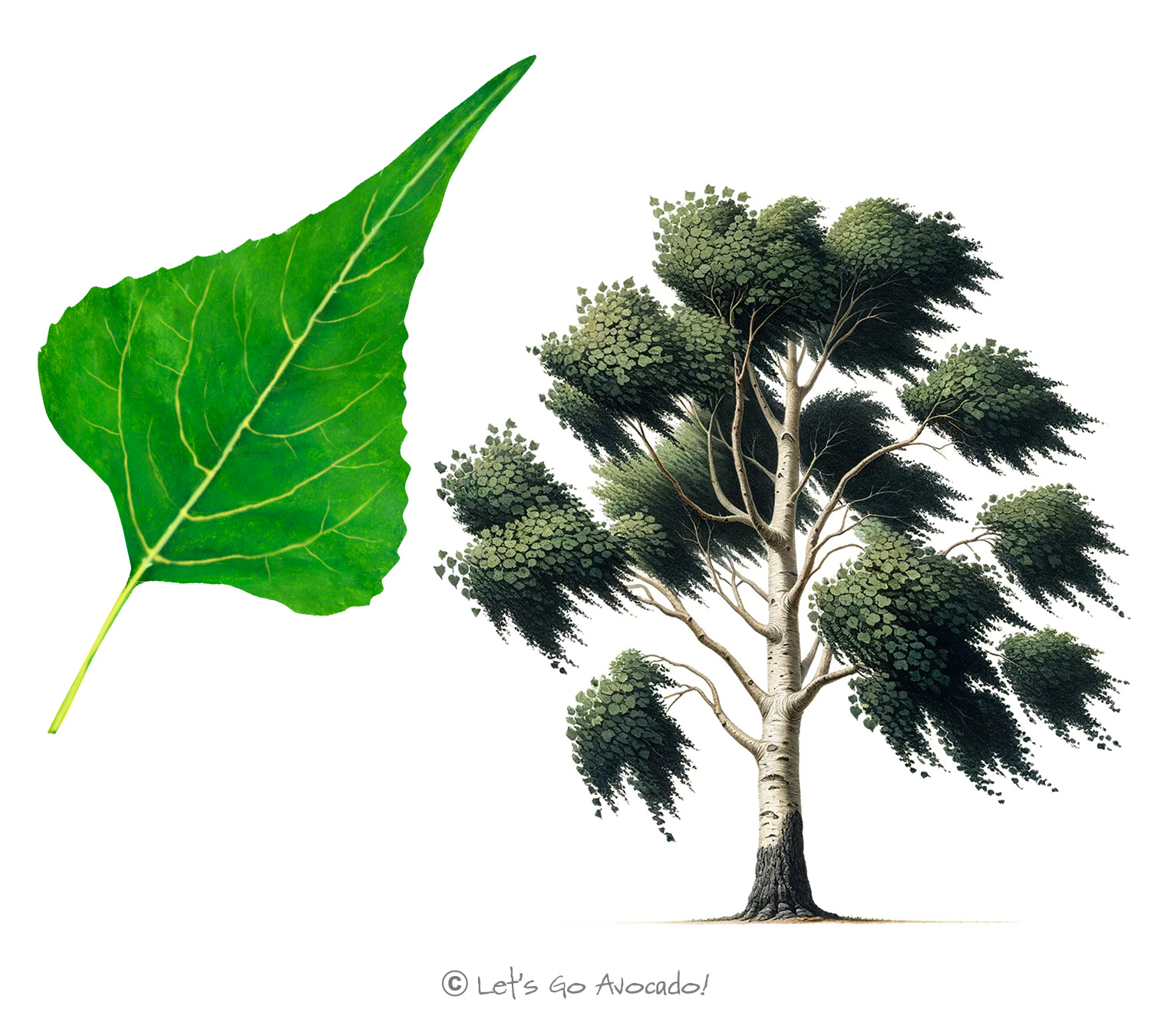The Black Poplar Tree: A Majestic Wonder of Nature
Young explorers, prepare for a fascinating journey into the world of the Black Poplar tree, known scientifically as Populus nigra. This towering tree is more than just wood and leaves; it’s a vital part of riverbank ecosystemsAn ecosystem is a community of living organisms, like insects and birds, and non-living components, like water and rocks, that interact with each other in a specific area. Learn More and a historical icon in the landscapes it graces. Native to Europe and Western Asia, the Black Poplar has spread its branches across many landscapes, captivating us with its grandeur and ecological importance. So, let’s dive deep into the life of the Black Poplar and uncover the mysteries and marvels it holds.
Distinctive Characteristics: The Black Poplar’s Unique Features
The Black Poplar is easily recognized by its tall, straight trunk and its deeply grooved, dark bark. The leaves are another distinctive trait – they’re triangular with serrated edges and turn a brilliant yellow in the fall. This tree stands out in the spring with its catkins, which are long, drooping flower clusters that add a unique touch to its appearance.
Size and Structure: A Towering Giant
In terms of size, the Black Poplar is truly impressive. It can grow up to 100 feet tall (30 meters), with a wide, spreading canopy that provides a vast area of shade. This grand size makes it a prominent feature in landscapes, often seen along riverbanks and in wetlands where it plays a critical role.
Growth and Lifecycle: The Black Poplar’s Journey
The lifecycle of the Black Poplar is a story of adaptationAn animal adaptation is a physical feature or a specific behavior that allows it to better survive in its environment. Learn More and survival. After pollination, the female catkins develop into fluffy seeds, which are dispersed by the wind and water. This tree prefers wet, fertile soils and is commonly found along rivers and streams, where it helps stabilize the banks and supports a diverse range of wildlife.
Ecosystem Role: A Keystone Species
The Black Poplar is an ecological powerhouse. Its dense canopy provides habitat for birds and insects, while its root system supports the riverbanks against erosion. The tree also plays a role in the water cycle, helping to regulate and maintain healthy aquatic ecosystems.
Resilience and Challenges: The Black Poplar’s Fight
Despite its strength, the Black Poplar faces challenges like habitat loss and competition from hybrid species. Efforts are ongoing to conserve this magnificent tree, which is crucial for maintaining the biodiversityBiodiversity refers to the variety of living things in an ecosystem. The more biodiversity there is in an ecosystem, the healthier and stronger it is. Learn More and health of its native environments.
Human Connections and Uses
Historically, the Black Poplar has been valued for its wood, used in making shields, boats, and clogs. It’s also a beloved ornamental tree, adding beauty and character to parks and public spaces. The tree’s presence in folklore and art highlights its cultural significance across different regions.
The Black Poplar tree, with its towering presence and ecological importance, is a living monument of nature’s resilience and beauty.
Keep exploring, and uncover the endless stories hidden in the green leaves and towering trunks of our world’s forests!










